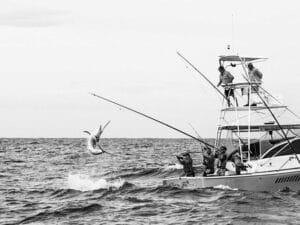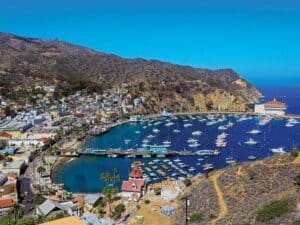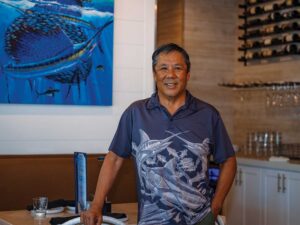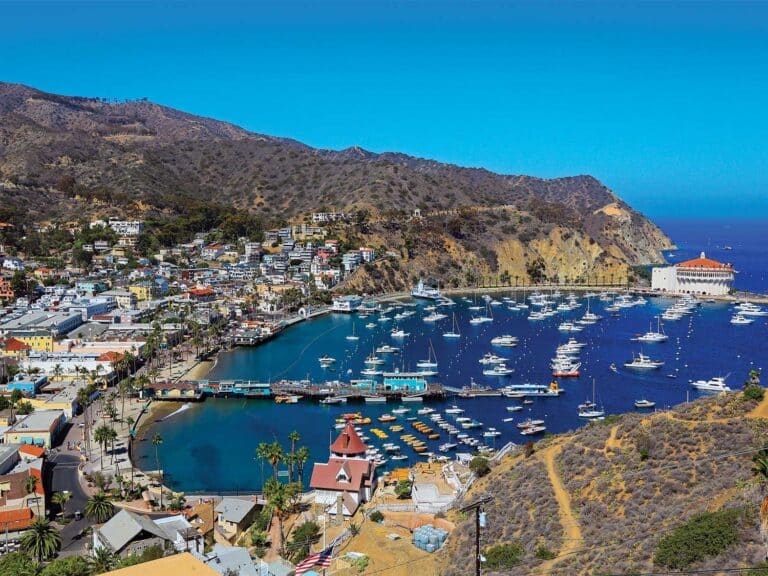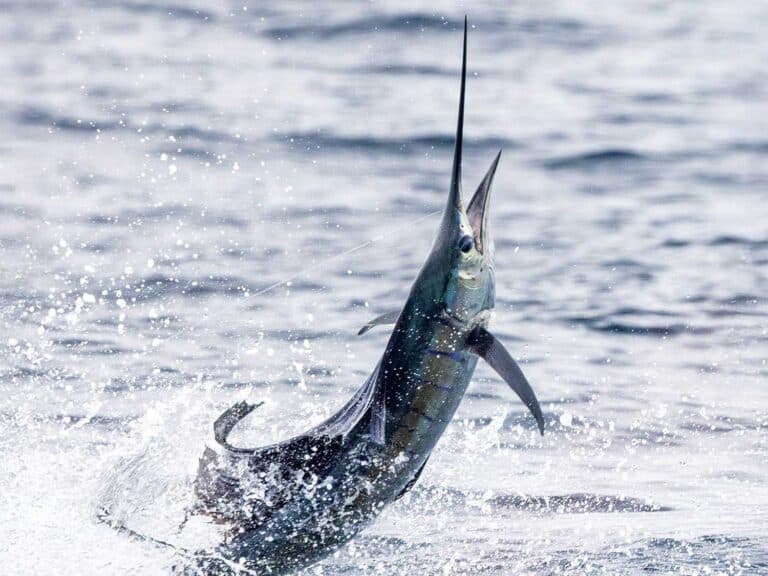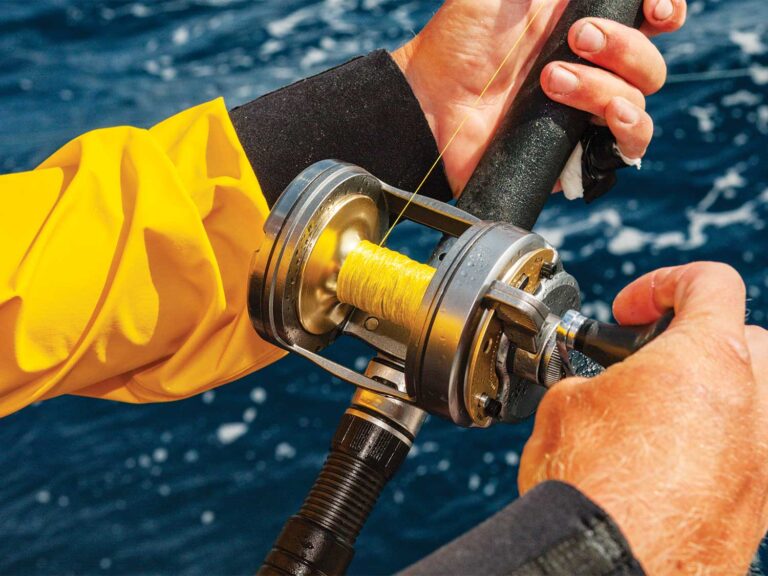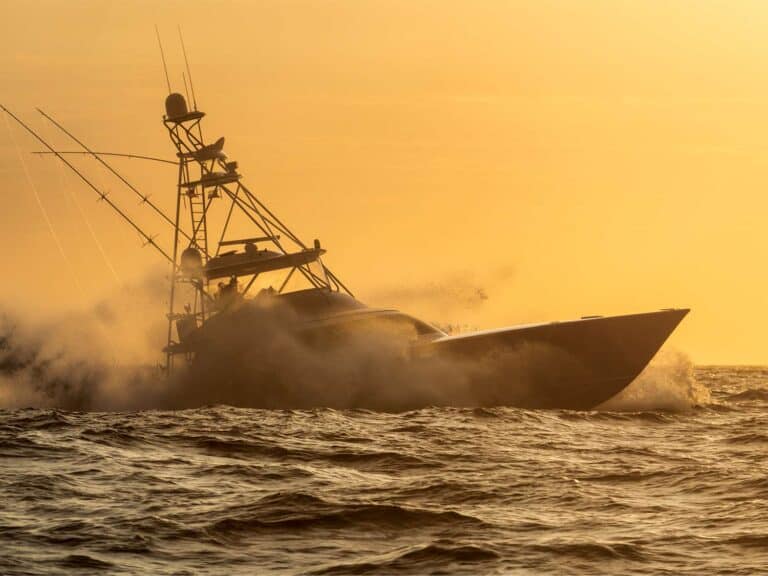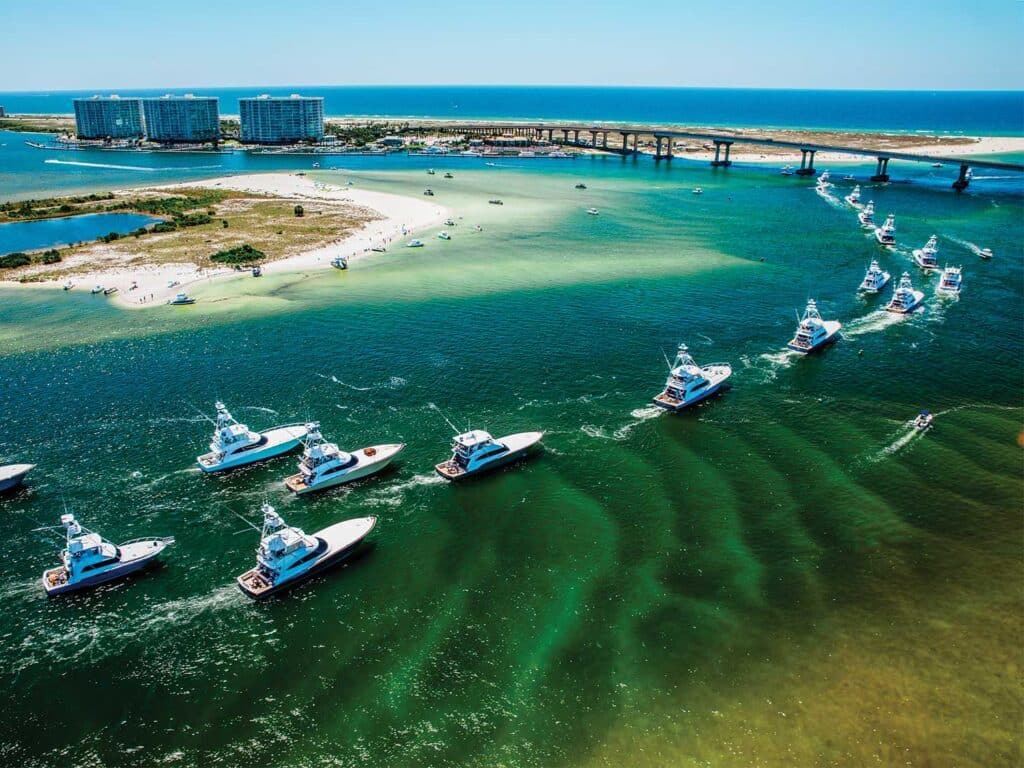
Subscribe to Marlin magazine and get a year of highly collectible, keepsake editions – plus access to the digital edition and archives. Sign up for the free Marlin email newsletter.
I was lucky to have been born in a home so close to the Gulf of Mexico—or is it the Gulf of America? As someone fortunate enough to be raised in one of the five states it borders, I’ve always just called it the Gulf and was introduced to her waters by my father at a young age.
Although hard to see for the uninitiated, there are perks to having to run 100 to 200 miles offshore before you deploy a bait, such as being on an overnighter in calm weather and watching the sun set, an orange ball of fire sinking into the horizon in a sky painted colors that even Sherwin-Williams can’t name. When the stars come out, there’s nothing like it! The sky is black velvet, sprinkled with thousands of stars, only interrupted by the lights of scattered rigs pumping gas and oil from deep below the bottom. And of course, there are some big critters swimming in the Gulf. Anglers have known that for decades, and it remains one of the best places on the planet to target trophy blue marlin and other pelagics.
In the 1960s, big-game-fishing clubs began sprouting up around the Gulf Coast, with the New Orleans Big Game Fishing Club being the first in 1961 and Mobile Big Game Fishing Club in Orange Beach, Alabama, following in 1966. Others soon came after, and it wasn’t long before competitions started sprouting up along the 1,700 miles of coastline stretching from Texas to Florida.
Fast-forward 60 years, and the Gulf Coast is now home to one of the richest big-game tournament cultures on the planet. The region’s rise to angling prominence didn’t happen by accident. Rather, a handful of visionaries—passionate anglers with deep roots in the region—built the foundation on which the Gulf Coast’s bluewater tournament scene now sits. This is an homage to those legends of the Gulf.
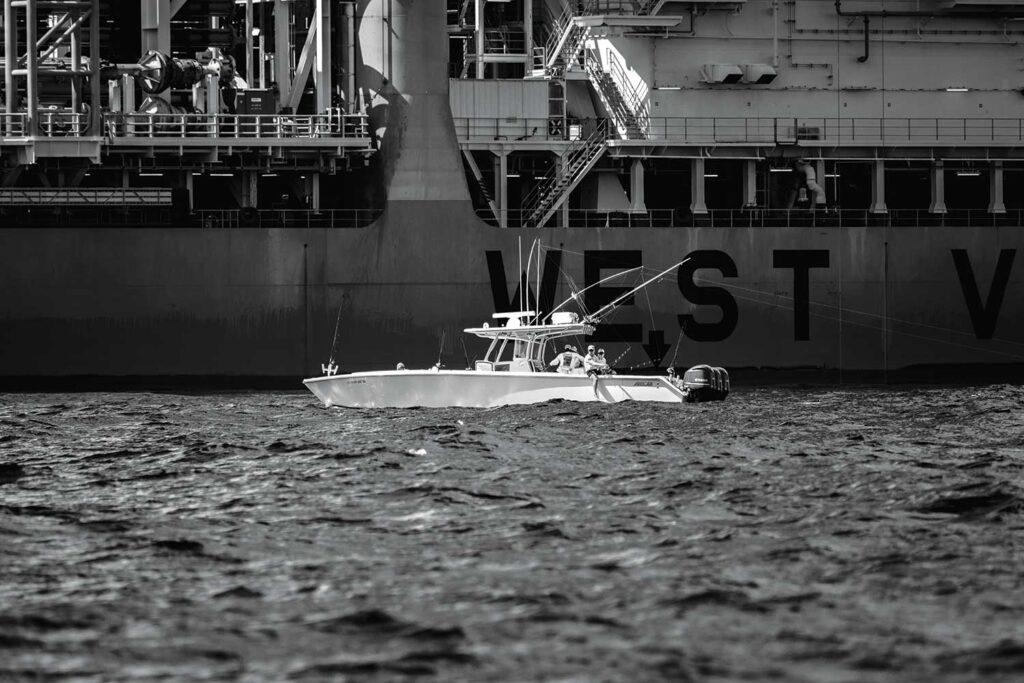
Bill Spann and Scott Burt—Panama City, Florida
In 1982, Bill Spann purchased Bay Point in Panama City, Florida, out of bankruptcy, along with the 1,100-acre property located on St. Andrew’s Bay. Spann began developing the area—a short ride from the Gulf and not far from the Intracoastal Waterway—into a community of homes, condos, amenities, restaurants, golf courses and a marina. “When I purchased Bay Point, the marina had no slips, just a bulkhead,” Spann explains. “We built out the marina, and I hired Scott Burt to run it.”
One of their first objectives was to promote the marina, so in 1983, Spann and Burt invited a few key people to a weekend roundtable at Bay Point to discuss a new invitational tournament concept. In attendance were Bill McLellan (founder of Marlin), Lee Stevens, and Sonny Middleton (owner of Middleton Marine, a big Gulf Coast Hatteras dealership in Mobile). Middleton was a heavy hitter with boat owners and clubs around the coast. “McLellan and Spann really hit it off, both being the true showmen they were,” says Burt. “For two days, we listened as they told us how to organize a tournament, make tournament rules, the basic structure—as well as things not to do.”

In July of 1984, the Bay Point Billfish Invitational was launched, and it was there that Spann had an epiphany. “The first time that I had any sense of the tournament’s potential was when your dad won the tournament,” he told me. “I’ve seen men that were excited on their wedding day or when their child graduated from college. But I’ve never seen a man as happy as your father. I saw how the crowds responded to him and others in the tournament. I made a decision that year not only to live by the rules of the tournament itself but to augment that with onshore activities for the spectators, introducing them to our sponsors and vendors, and just create a citywide celebration.”
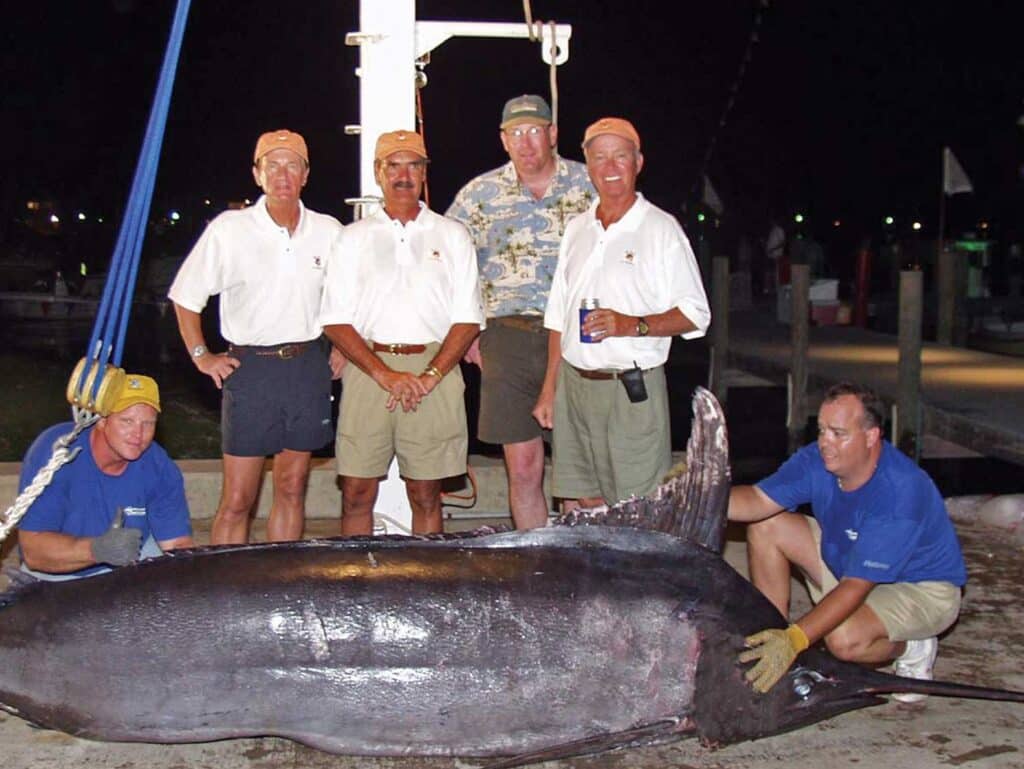
The men involved in the inception of the Bay Point Billfish Invitational had indeed created an iconic event that became a Gulf Coast staple, drawing some of the best boats, anglers and sport-fishing teams in the world. At its height, the tournament was a four-day celebration with live entertainment, food and beverage venues, parades, fireworks and camaraderie between the participants and the spectators.
In 2007, Bill Spann sold the Bay Point development, and that began the decline of this once great tournament, which ended in 2011 following several years of devastating hurricanes in the region. However, two years ago in 2023, the new owners of the property reinstated the tournament as the Bay Point Open and top boats and crews are now returning to fish this event that really started it all for Gulf Coast tournaments.

Bobby Carter and Bill McLellan—Biloxi, Mississippi
Bobby Carter and McLellan learned a lot from Spann, and they soon began discussing ideas for creating a tournament in Biloxi, Mississippi. They wanted something just as big and splashy but with a twist—gambling. Carter was a very popular and successful host at what was then the Isle of Capri Casino & Hotel, now The Golden Nugget. “I told McLellan,” Carter laughs while recounting the story, “gamblers like to fish, and fishermen like to gamble.”
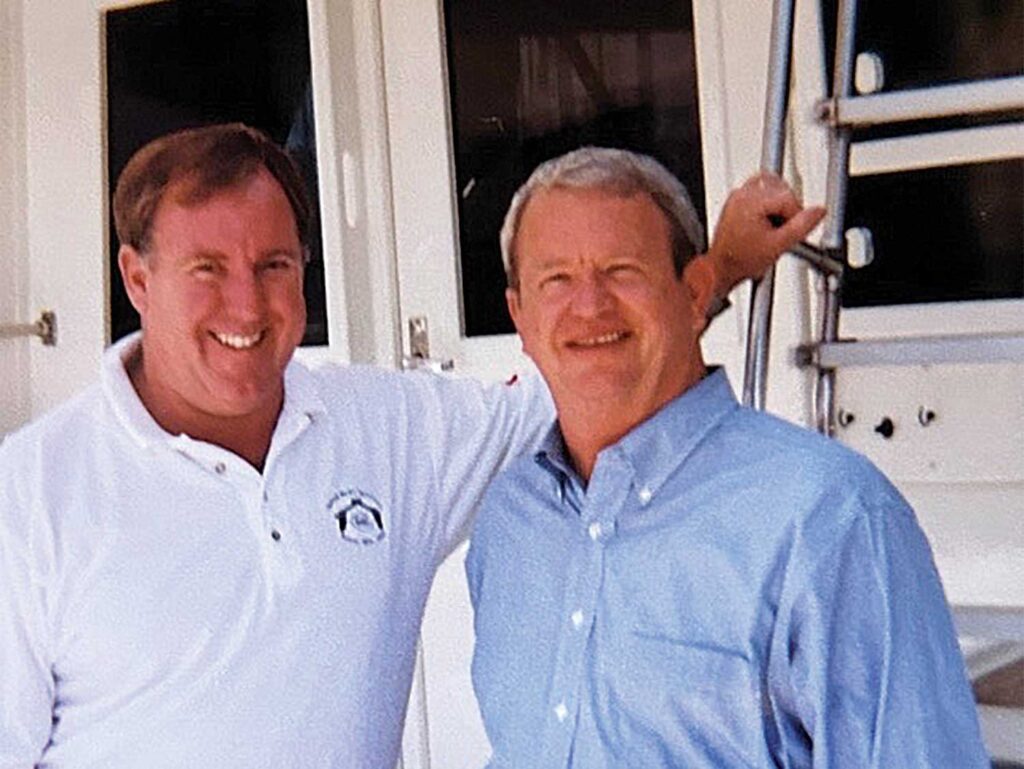
That was a winning combination that set the tone for the creation of the Mississippi Gulf Coast Billfish Classic in June of 1997. Carter enlisted cooperation and assistance from the city of Biloxi and the Isle of Capri. Anglers came in a day or two before the tournament, renting rooms generally for the entire week, and when they weren’t fishing, they were in the casino gambling.
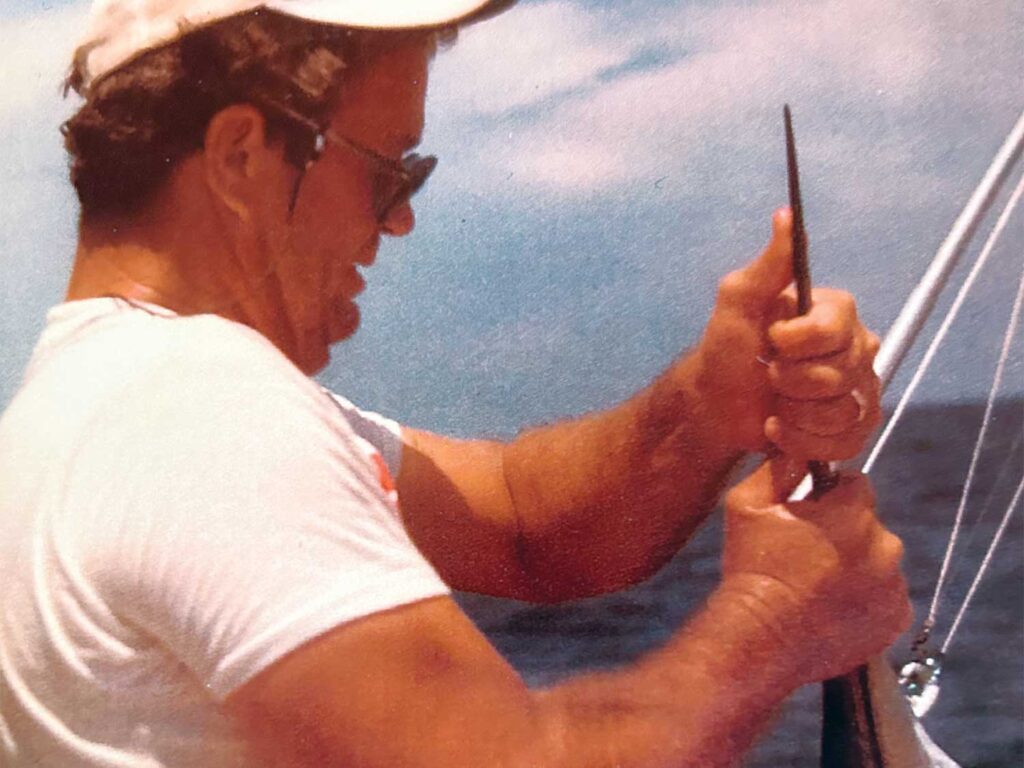
After learning that the Mississippi blue-marlin record was only 485 pounds, and wanting to up the stakes even further on the tournament, he purchased an insurance policy to break the Mississippi record. According to Carter, once he sent out letters to boat owners about a $100,000 jackpot for breaking the state record, entry checks started rolling in. In the first year, they had 60 boats enter, and two blue marlin exceeding the state record were landed. Never Content’s 630-pounder briefly set the mark and won the $100,000 jackpot, but Miss New Orleans weighed a 917-pound fish, which was disqualified from the tournament due to IGFA rules, yet later certified as the new state record as the state’s requirements were not as stringent.
Since 1997, the MGCBC has been one of the premiere tournaments in the Gulf, and in the world, with an average of 90-plus boats fishing every tournament that hasn’t been affected by bad weather. Carter’s son, Robbie Carter, has followed in his father’s footsteps and is now running tournaments in Louisiana and Texas, having seen the success of the MGCBC. Over the years, the tournament has accounted for six state records. Only one boat has ever won the tournament three years in a row: It Just Takes Time, a 72’ Viking owned by Nick Pratt and captained by my oldest son, Chris Marlin Hood.
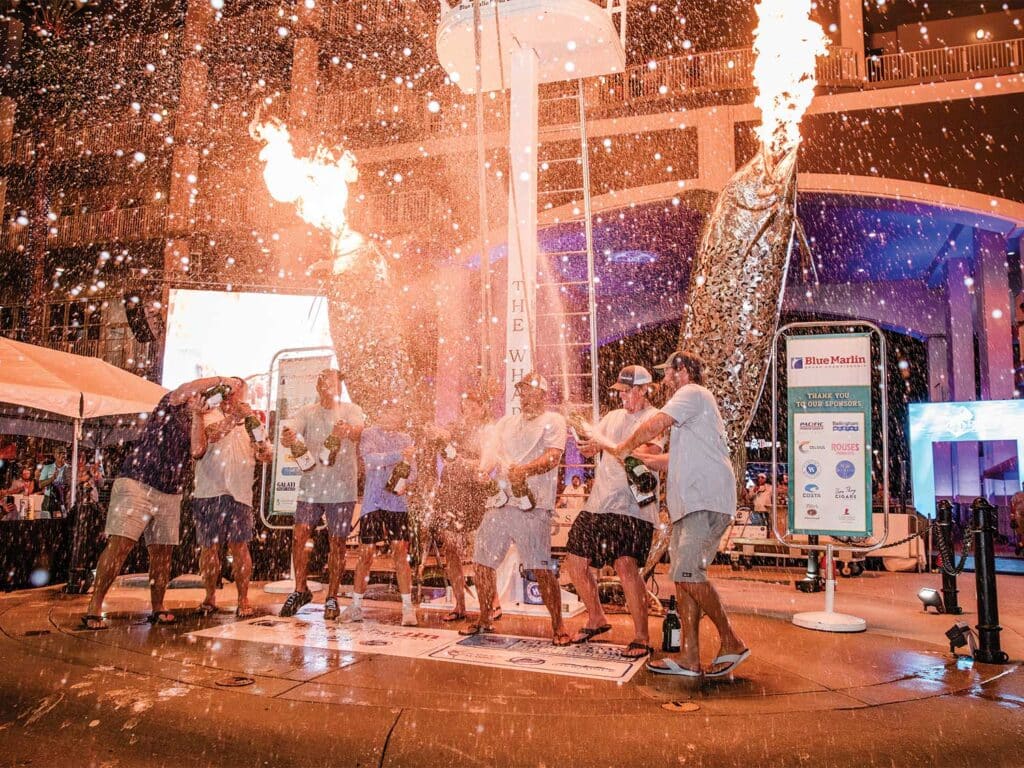
Scott Burt and Art Favre—Orange Beach, Alabama
When Art Favre purchased The Wharf in Orange Beach, Alabama, out of receivership in 2010, the 222 mixed-use acres included waterfront condos, a 200-slip marina on the intracoastal, and a myriad of modern amenities. Favre hired Coastal Marina Management to run the marina, and he went to work filling many spaces in the complex and refining the property to truly make The Wharf a premiere destination.
Two years later, in 2012, Rocky Jones—a well-known tournament angler from Pensacola—and Scott Burt partnered to create the Blue Marlin Grand Championship, leveraging the ideal venue Favre had created. In doing so, they essentially resurrected the weeklong spectacle Burt had built during his time at Bay Point. “It’s the crowds and the venue that make it a great event, just like the Bay Point Invitational,” says Burt. “Our weigh-ins are held right in the middle of the entertainment district at The Wharf, with as many as 10,000 spectators crowding around to watch the teams bring their catches to the scale, right in front of two 25-foot metal jumping blue marlin that shoot flames into the sky. The crowds love it.”
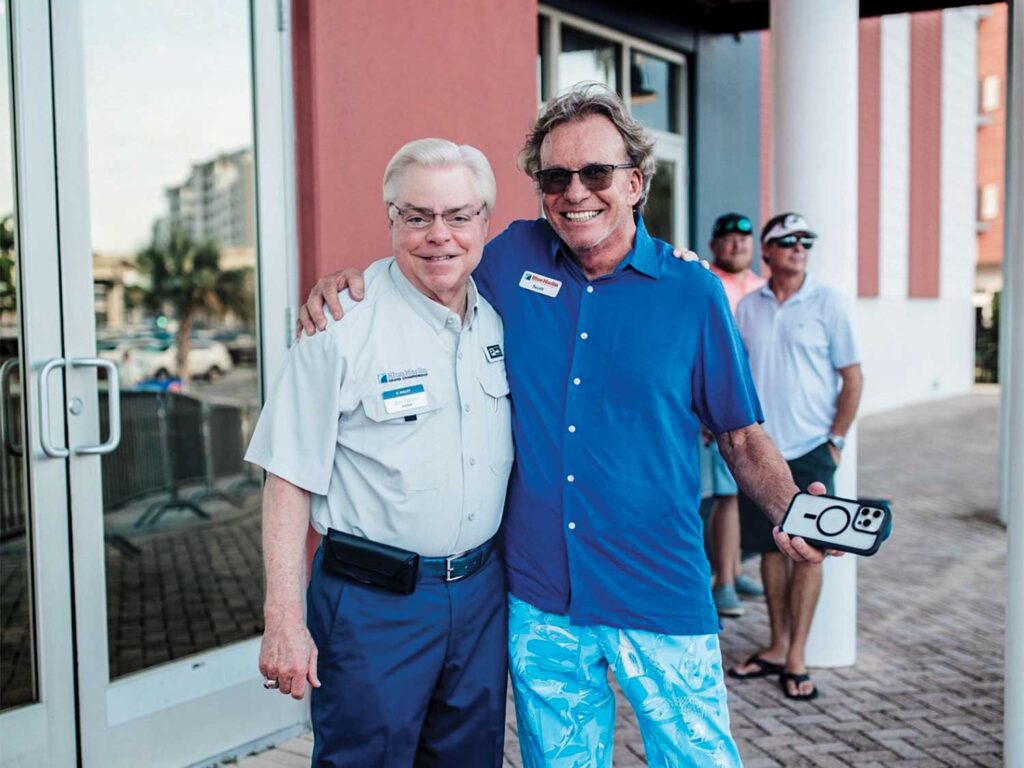
Years earlier, in 2007, while still at Bay Point, Burt created the Gulf Coast Triple Crown Championship (GCTCC)—a prestigious, points-based series involving several tournaments that had been originally conceived by Sonny Middleton. In 2012, the same year that they launched the Blue Marlin Grand Championship, Burt made the strategic decision to move the GCTCC closing ceremony to The Wharf, and the rest is history. Today, the GCTCC recognizes the top-performing team across four of the Gulf’s most iconic billfish tournaments: the Orange Beach Billfish Classic, the Mississippi Gulf Coast Billfish Classic, the Emerald Coast Blue Marlin Classic at Sandestin, and the Blue Marlin Grand Championship.

Rene Cross—Venice, Louisiana
Few individuals have contributed more to the evolution of Louisiana’s offshore-fishing scene than Rene Cross. As the owner and operator of Cypress Cove Marina in Venice and the driving force behind the Cajun Canyons Billfish Classic, Cross has spent years shaping one of the Gulf Coast’s most celebrated tournament destinations.
Originally founded in 2003 by the late Steve Thomas, the Cajun Canyons has grown into a staple on the Gulf’s summer tournament circuit. When Cross acquired the event shortly before Thomas’ passing, he committed to honoring its legacy while elevating the experience for anglers. “We’re tucked away at the end of the road in a remote cypress swamp, but we’ve created something special,” Cross says. “Live Cajun music, incredible seafood, big meals, big drinks and the kind of camaraderie that brings teams back year after year. It’s a celebration of what makes fishing in Louisiana so unique.”
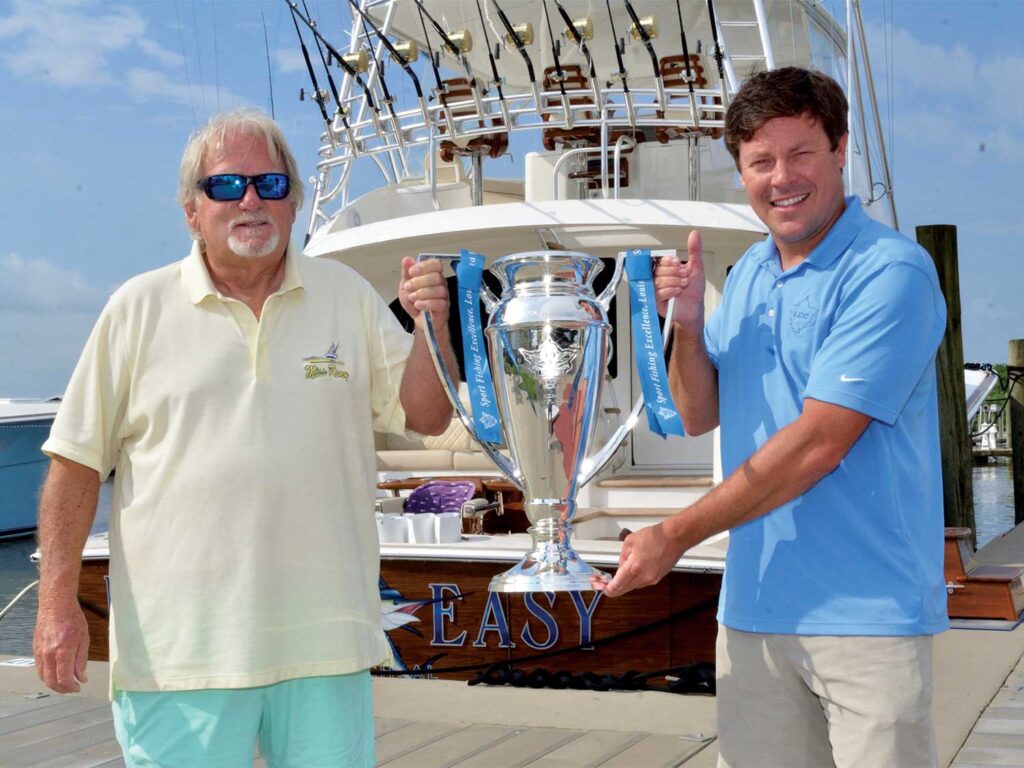
Venice’s proximity to the deep waters of the Gulf—the closest of any place along the Gulf Coast—makes it a natural hub for big-game anglers. Dubbed the Sportsman’s Paradise, Louisiana continues to draw top talent to its world-class offshore fishery, and events like the Cajun Canyons play a central role in that reputation.
In 2024, Cross expanded that legacy even further by partnering with Robbie Carter—whose father founded the iconic Mississippi Gulf Coast Billfish Classic—to launch the Louisiana Champions Cup. The new series connects six of the state’s top tournaments under a unified leaderboard and championship trophy, adding prestige and competitive spirit to an already thriving tournament calendar. “Anglers here aren’t just chasing fish and dollars,” Cross says. “They’re chasing tradition, stories and community. That’s what we’ve built, and we’re proud to keep growing it.”
